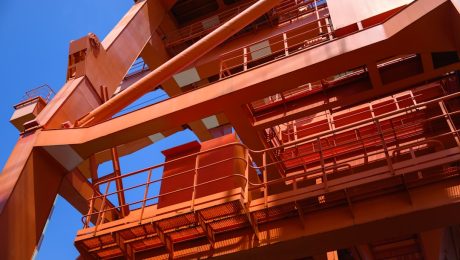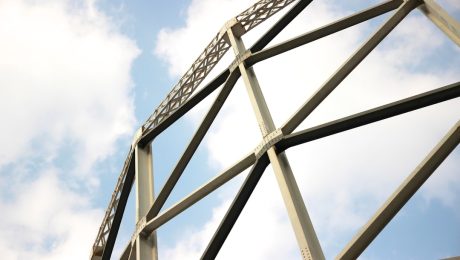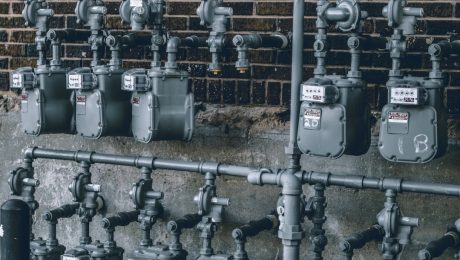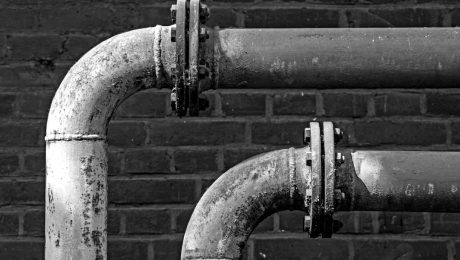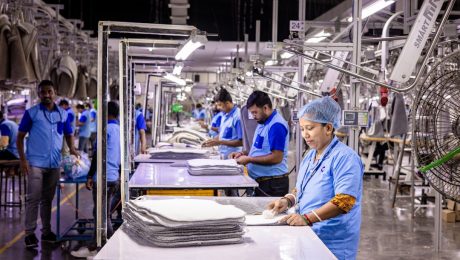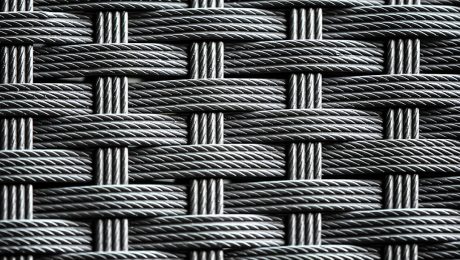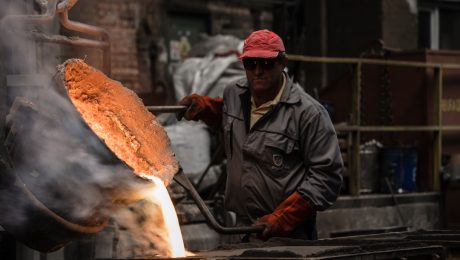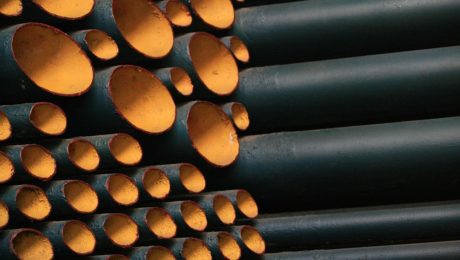body { font-family: sans-serif; line-height: 1.6; }
h1, h2, h3 { color: #333; }
h1 { font-size: 2.5em; }
h2 { font-size: 2em; }
h3 { font-size: 1.5em; }
The steel industry is a dynamic market, constantly fluctuating in price and availability. Choosing the right procurement strategy is crucial for businesses relying on steel as a raw material. This often boils down to a critical decision: should you opt for the flexibility of spot contracts or the stability of long-term agreements? This comprehensive guide breaks down the advantages and disadvantages of each, helping you determine which approach best aligns with your business goals.
Understanding Spot Steel Contracts: Riding the Price Waves
Spot contracts involve purchasing steel on the open market, at the prevailing price, for immediate or near-term delivery. This approach offers significant flexibility, allowing businesses to react quickly to changes in demand and price fluctuations. You only buy what you need, when you need it. However, this flexibility comes at a cost.
Advantages of Spot Contracts:
- Flexibility: Adjust your purchases based on real-time market conditions and project needs.
- Price responsiveness: Benefit from lower prices if the market dips.
- Reduced inventory costs: Only purchase the steel you need, minimizing storage and holding costs.
Disadvantages of Spot Contracts:
- Price volatility: Exposure to significant price swings can impact profitability.
- Supply chain risks: Potential for shortages or delays due to market fluctuations.
- Transaction costs: Frequent procurement requires more administrative overhead.
- Lack of guaranteed supply: No assurance of consistent steel availability.
Long-Term Steel Contracts: Securing Stability and Predictability
Long-term steel contracts involve agreeing on a fixed price or pricing formula for a specified quantity of steel over a defined period (e.g., one year, three years). This approach provides stability and predictability, minimizing the risk of price volatility.
Advantages of Long-Term Contracts:
- Price stability: Protection against price increases, providing budget certainty.
- Guaranteed supply: Secure a consistent supply of steel, mitigating supply chain disruptions.
- Improved planning: Facilitates better production planning and forecasting.
- Stronger supplier relationships: Develop closer ties with suppliers, potentially leading to preferential treatment.
Disadvantages of Long-Term Contracts:
- Price inflexibility: May miss out on potential price drops in the market.
- Commitment risks: Tied to a specific supplier and quantity for the contract duration.
- Inventory management challenges: Potential for overstocking if demand fluctuates.
- Contract negotiation complexity: Requires careful negotiation to ensure favorable terms.
Analyzing Your Steel Requirements: Finding the Right Fit
The optimal choice between spot and long-term contracts depends heavily on your specific business needs. Consider these factors:
- Production volume and consistency: High and consistent demand may favor long-term contracts.
- Risk tolerance: Higher risk tolerance might lean towards spot contracts, while risk aversion favors long-term agreements.
- Market volatility: In highly volatile markets, long-term contracts offer greater protection.
- Storage capacity: Adequate storage is essential for managing inventory under long-term contracts.
- Financial resources: Long-term contracts often require upfront commitments.
Hybrid Approach: Balancing Flexibility and Stability
Many businesses adopt a hybrid approach, combining elements of both spot and long-term contracts. This strategy allows them to secure a portion of their steel needs through long-term agreements for stability, while utilizing spot contracts for flexibility in meeting fluctuating demand or taking advantage of market dips.
This approach requires careful planning and monitoring of market conditions to ensure optimal balance between risk and reward. It’s often beneficial to work with a steel procurement specialist to help navigate this complexity.
Negotiating Favorable Steel Contracts: Key Considerations
Regardless of whether you choose spot or long-term contracts, effective negotiation is crucial. Key considerations include:
- Clearly defined terms and conditions: Ensure complete clarity on pricing, quantities, delivery schedules, and payment terms.
- Price adjustment mechanisms: Incorporate clauses addressing potential price fluctuations in long-term contracts.
- Dispute resolution mechanisms: Include processes for resolving disagreements or disputes.
- Supplier reliability and reputation: Thoroughly vet potential suppliers to ensure they are capable of meeting your needs.
- Market analysis: Stay informed about market trends to make informed decisions.
By carefully considering these factors and understanding the nuances of spot and long-term steel contracts, businesses can make informed procurement decisions that optimize their operations and enhance their bottom line.
Tags: spot steel contracts, long-term steel contracts, steel procurement, steel pricing, steel supply chain
Universal Parallel Flange (UPN) profiles, also known as parallel flange channels, are ubiquitous in structural engineering projects. Their versatility and cost-effectiveness make them a popular choice for a wide range of applications, from simple frameworks to complex constructions. This comprehensive guide delves into the intricacies of UPN profiles, providing a detailed understanding of their properties, applications, and design considerations.
Understanding UPN Profile Geometry and Properties
UPN profiles are characterized by their parallel flanges and a central web. This geometry contributes to their significant bending strength and stiffness. Key geometrical properties include the overall depth (height), flange width, web thickness, and flange thickness. These dimensions determine the section’s area, moment of inertia (I), section modulus (Z), and radius of gyration (r). These properties are crucial for calculating the structural capacity of the UPN profile under various loading conditions. Accurate determination of these properties, often found in steel section tables or engineering software, is paramount for successful design. Different manufacturers may have slight variations in dimensions, so always refer to the specific manufacturer’s data sheets.
Stress and Strain Analysis of UPN Profiles
Understanding the stress and strain behavior of UPN profiles is essential for ensuring structural integrity. Under loading, UPN sections experience bending moments and shear forces. These forces induce stresses within the profile, primarily tensile stresses in the outer fibers of the flanges and compressive stresses in the inner fibers. The section modulus (Z) is a key parameter used to calculate bending stresses (σ = M/Z, where M is the bending moment). Shear stresses (τ) are calculated based on the shear force (V) and the section’s area. Finite Element Analysis (FEA) software can provide detailed stress and strain distributions within the profile, offering a more comprehensive understanding of its behavior under complex loading scenarios. Accurate stress analysis is crucial to prevent yielding, buckling, and ultimate failure.
Applications of UPN Profiles in Structural Engineering
UPN profiles find extensive use in a broad range of structural applications. Common examples include:
- Beams and Girders: UPNs are frequently used as beams in various structures, supporting floors, roofs, and other loads. Their parallel flanges provide excellent bending resistance.
- Columns and Supports: Their high stiffness makes them suitable for columns in light-duty structures, particularly where space constraints are a factor.
- Bracing Members: UPNs serve as effective bracing elements in structures, enhancing stability and resisting lateral loads. Their straight shape makes them easy to connect to other members.
- Industrial Frameworks: They are commonly used in the construction of industrial buildings, workshops, and other heavy-duty structures, where strength and durability are paramount.
- Cladding Supports: UPN profiles can effectively support cladding systems, ensuring stability and preventing damage caused by wind or other environmental factors.
Design Considerations and Connection Techniques for UPN Profiles
Designing with UPN profiles requires careful consideration of various factors, including:
- Load Calculations: Accurate determination of all loads (dead, live, wind, snow, seismic) is paramount for safe and efficient design. This often involves complex calculations based on structural analysis principles.
- Material Properties: The yield strength and ultimate tensile strength of the steel used are critical for determining the profile’s capacity. These properties are specified in relevant steel standards.
- Buckling Considerations: UPN profiles can be susceptible to buckling, particularly under compressive loads. Design checks should be performed to ensure that the slenderness ratio is within acceptable limits.
- Connection Design: Appropriate connection methods, such as welding, bolting, or riveting, must be selected based on the load requirements and structural details. Properly designed connections are vital for transferring loads effectively and ensuring structural integrity.
- Corrosion Protection: Appropriate corrosion protection measures, such as painting or galvanizing, should be implemented to extend the service life of the UPN profiles, especially in harsh environments.
UPN Profiles vs. Other Steel Sections: A Comparative Analysis
Choosing the right steel section is crucial for optimal structural performance and cost-effectiveness. UPN profiles offer several advantages, including their parallel flanges, which facilitate easy connection and provide excellent bending resistance. However, they may not always be the most economical or efficient choice compared to other sections like I-beams, H-beams, or channels. The selection depends on factors such as the load requirements, available space, and cost considerations. A comparative analysis of the relevant section properties, including weight, cost, and strength, should be undertaken to determine the most suitable option for a given application. Software tools and engineering handbooks can assist in this comparative analysis.
In conclusion, understanding the properties, applications, and design considerations of UPN profiles is crucial for structural engineers. Careful analysis and attention to detail throughout the design process ensure the safe and efficient use of these versatile steel sections in a wide range of construction projects.
Tags: UPN profile, structural steel, steel sections, parallel flange channel, structural engineering design
API 5L is a globally recognized standard for line pipe used in the oil and gas industry. Understanding its intricacies is crucial for anyone involved in the design, manufacturing, procurement, or inspection of pipelines. This comprehensive guide will delve into the key aspects of API 5L, providing a clear and concise explanation for both novices and experienced professionals.
Understanding API 5L Specifications
API 5L, officially titled “Specification for Line Pipe,” is published by the American Petroleum Institute (API). It outlines the requirements for seamless and welded steel line pipe intended for the transportation of petroleum, natural gas, and other related products. The specification covers various aspects, including:
- Material Requirements: API 5L defines acceptable steel grades, each with specific chemical composition and mechanical property requirements. These grades are categorized based on their strength, toughness, and weldability.
- Manufacturing Processes: The standard details the permissible manufacturing methods for both seamless and welded pipes, including the required quality control measures at each stage of production.
- Dimensional Tolerances: API 5L specifies acceptable variations in pipe dimensions, such as outside diameter, wall thickness, and length, to ensure consistent performance and compatibility.
- Testing Requirements: The standard mandates various tests to ensure the pipe meets the specified requirements. These include tensile tests, bend tests, and hydrostatic tests, among others.
- Marking and Identification: API 5L dictates the marking requirements for each pipe, including the manufacturer’s identification, grade, and other relevant information.
Decoding API 5L Grades and Their Applications
API 5L specifies numerous steel grades, each designed for specific applications and operating conditions. The grade designation usually consists of a letter followed by numbers (e.g., L80, X70). The letter indicates the manufacturing process (e.g., L for seamless, X for welded), and the numbers represent the minimum yield strength of the steel in ksi (kilopounds per square inch). For instance, X70 denotes a welded pipe with a minimum yield strength of 70 ksi. Different grades are suitable for various pressures and temperatures, influencing their use in different pipeline segments.
Some common API 5L grades and their typical applications include:
- L80: Commonly used for high-pressure applications.
- X65: A versatile grade suitable for a wide range of applications.
- X70: Often employed in long-distance pipelines due to its high strength.
- X80: Used for high-pressure, high-temperature applications.
- X100: Suitable for extremely demanding applications requiring superior strength.
API 5L Testing and Quality Control
Rigorous testing is essential to ensure API 5L pipe meets the specified quality standards. This includes a series of destructive and non-destructive tests performed at various stages of production. These tests verify the chemical composition, mechanical properties, and dimensional accuracy of the pipe.
Key tests include:
- Tensile Testing: To determine the yield strength, tensile strength, and elongation of the steel.
- Bend Testing: To assess the ductility and formability of the pipe.
- Hydrostatic Testing: To verify the pipe’s ability to withstand internal pressure.
- Non-Destructive Testing (NDT): Techniques like ultrasonic testing and radiographic testing are used to detect internal flaws without damaging the pipe.
Ensuring API 5L Compliance
Compliance with API 5L is crucial for ensuring the safety and reliability of pipelines. This involves selecting the appropriate pipe grade based on the project’s specific requirements, verifying the manufacturer’s compliance with the standard, and implementing appropriate quality control measures throughout the project lifecycle. Independent third-party inspection is often employed to ensure compliance and provide assurance to stakeholders.
Key aspects of ensuring compliance include:
- Material Traceability: Maintaining a clear chain of custody for the materials used in pipe manufacturing.
- Documentation Review: Thoroughly reviewing the manufacturer’s test reports and certifications.
- Inspection and Verification: Conducting regular inspections during the manufacturing, transportation, and installation phases.
- Independent Third-Party Inspection: Engaging independent inspectors to verify compliance with API 5L standards.
The Future of API 5L and Emerging Trends
The API 5L standard continues to evolve to meet the ever-changing demands of the oil and gas industry. New grades are being developed to meet the challenges of increasingly demanding applications, such as deepwater pipelines and high-pressure gas transmission lines. Furthermore, there’s a growing emphasis on sustainable practices and the development of environmentally friendly materials.
Emerging trends include:
- Development of higher-strength grades: To enhance pipeline capacity and efficiency.
- Improved corrosion resistance: To extend the lifespan of pipelines.
- Advanced manufacturing techniques: To enhance production efficiency and quality.
- Increased focus on sustainability: Using recycled materials and reducing environmental impact.
This comprehensive guide provides a solid foundation for understanding API 5L pipe standards. By understanding the specifications, grades, testing procedures, and compliance requirements, stakeholders can ensure the safe and reliable operation of pipelines globally.
Energy projects, from sprawling power plants to intricate oil and gas pipelines, rely heavily on the efficient and safe transport of fluids. The heart of this system? The piping. Choosing the right pipe isn’t simply a matter of picking something that fits; it’s a critical decision impacting project cost, safety, longevity, and environmental impact. This comprehensive guide will navigate you through the key considerations for selecting the perfect pipe for your energy project.
1. Material Selection: The Foundation of Pipe Durability
The material of your pipe is the cornerstone of its performance. The choice depends heavily on the fluid being transported, the operating temperature and pressure, and the environmental conditions. Common materials include:
- Carbon Steel: A workhorse in the energy industry, carbon steel pipes offer strength and affordability. However, they are susceptible to corrosion, especially in harsh environments. Protective coatings or linings are often necessary.
- Stainless Steel: Superior corrosion resistance makes stainless steel ideal for handling corrosive fluids or operating in aggressive environments. Different grades (e.g., 304, 316) offer varying levels of corrosion resistance and strength.
- Duplex Stainless Steel: Combining the strength of carbon steel with the corrosion resistance of stainless steel, duplex stainless steel is a high-performance option for demanding applications.
- High-Temperature Alloys: For extremely high-temperature applications, such as those found in power generation, high-temperature alloys like Inconel and Hastelloy are essential to maintain structural integrity.
- Plastics (e.g., PVC, HDPE): Lightweight and corrosion-resistant, plastic pipes are suitable for lower-pressure applications and specific fluids. However, their temperature and pressure limitations must be carefully considered.
Careful consideration of material compatibility with the transported fluid is paramount. Chemical reactions can lead to pipe degradation, leaks, and potentially catastrophic failures.
2. Pressure Ratings and Safety: Ensuring Operational Integrity
Operating pressure is a critical factor in pipe selection. Pipes are designed and rated to withstand specific pressures, and choosing a pipe with an inadequate pressure rating can lead to dangerous ruptures. Pressure ratings are usually expressed in pounds per square inch (psi) or megapascals (MPa). The selected pipe must have a pressure rating significantly higher than the maximum expected operating pressure, incorporating a substantial safety factor.
Safety standards and regulations play a vital role in determining appropriate pressure ratings. Compliance with relevant codes and standards (e.g., ASME B31.1, ASME B31.3, API 5L) is mandatory to ensure the safety of personnel and the environment.
Regular inspections and maintenance are also crucial to ensure continued operational safety and prevent failures due to pressure fluctuations or corrosion.
3. Diameter and Flow Rate Calculations: Optimizing Efficiency
The diameter of the pipe directly impacts the flow rate of the fluid. An undersized pipe will lead to increased pressure drop and reduced efficiency, while an oversized pipe might be unnecessarily expensive and bulky. Accurate hydraulic calculations are essential to determine the optimal pipe diameter based on the required flow rate, fluid properties (viscosity, density), and acceptable pressure drop.
Software tools and engineering handbooks provide resources for performing these calculations. Factors like pipe roughness and fittings also influence pressure drop and should be included in the calculations.
Careful planning and design can minimize pressure drops, thereby maximizing energy efficiency and reducing operational costs.
4. Environmental Considerations: Minimizing Impact
The environmental impact of pipe selection should not be overlooked. The manufacturing process of different pipe materials consumes varying amounts of energy and resources. Furthermore, some materials may release harmful substances into the environment during their lifecycle. Choosing environmentally friendly materials, such as recycled materials or those with lower carbon footprints, should be prioritized whenever feasible.
Leak detection and prevention measures are crucial to minimize the environmental impact of potential spills or leaks. Proper installation and regular maintenance can significantly reduce the risk of environmental damage.
Consideration should be given to the potential for soil erosion and habitat disruption during the pipe installation process. Minimizing the environmental footprint requires careful planning and execution.
5. Cost Analysis: Balancing Performance and Budget
The initial cost of the pipe is only one aspect of the overall cost. Factors like installation costs, maintenance requirements, lifespan, and potential repair or replacement costs should all be considered. While a cheaper pipe might seem attractive initially, it could lead to higher long-term costs if it requires frequent maintenance or premature replacement.
A thorough life-cycle cost analysis helps to identify the most cost-effective option. This analysis considers all costs associated with the pipe over its entire lifespan, allowing for a more informed decision.
Balancing performance requirements, safety standards, environmental considerations, and budget constraints is crucial in achieving optimal cost-effectiveness.
Choosing the right pipe for energy projects is a multifaceted process requiring careful consideration of various factors. By carefully evaluating material properties, pressure ratings, flow rate requirements, environmental implications, and cost-effectiveness, project engineers can ensure the selection of a pipe that meets the project’s specific needs and contributes to a safe, efficient, and sustainable energy future.
Tags: Energy Piping, Pipe Selection, Pipeline Engineering, Pressure Piping, Material Selection Energy
Navigating the complex world of European Norms (EN) standards can be daunting for manufacturers. These standards, developed by the European Committee for Standardization (CEN), dictate essential safety, performance, and quality requirements for a vast range of products. Meeting these standards isn’t just a box to tick; it’s crucial for market access, brand reputation, and customer trust. This comprehensive guide will help you understand the process of manufacturing to meet EN standards.
1. Identifying Relevant EN Standards for Your Product
The first step in achieving EN compliance is identifying which standards apply to your specific product. This isn’t always straightforward, as the sheer number of EN standards is vast and covers numerous sectors. You’ll need to thoroughly research the relevant product categories and directives. The official CEN website is a valuable resource, allowing you to search by keyword or product type. Consider consulting with industry experts or standards specialists if you’re unsure. Failing to identify all applicable standards can lead to costly rework or even market rejection later in the process.
For example, a manufacturer of electrical appliances will need to comply with standards related to electromagnetic compatibility (EMC), low-voltage directives (LVD), and potentially others depending on the specific functionality of the appliance. A construction materials manufacturer will have a completely different set of relevant EN standards concerning safety, fire resistance, and structural integrity. This initial research is critical and forms the foundation for your compliance strategy.
2. Implementing a Robust Quality Management System (QMS)
Meeting EN standards isn’t just about adhering to specific technical requirements; it’s about establishing a comprehensive quality management system (QMS). A well-structured QMS ensures consistent product quality, traceability, and continuous improvement. Many EN standards are directly linked to or influenced by ISO 9001, the internationally recognized standard for quality management. Implementing an ISO 9001-compliant QMS provides a strong framework for meeting numerous EN standards simultaneously.
Key elements of a robust QMS include: documented processes, regular audits, corrective and preventive actions (CAPA), employee training, and ongoing monitoring of key performance indicators (KPIs). This systematic approach ensures that your manufacturing process consistently produces products that meet the required standards. Thorough documentation is crucial for demonstrating compliance to auditors and regulatory bodies.
3. Rigorous Testing and Verification Procedures
Once your manufacturing process is in place, rigorous testing is paramount. EN standards often outline specific testing procedures and acceptance criteria. These tests might involve physical measurements, performance evaluations, safety checks, or environmental simulations, depending on the product and the applicable standards. You might need to conduct internal testing, or, for certain standards, you may be required to use accredited third-party testing laboratories.
Accurate record-keeping is essential during this phase. All test results, including deviations from expected values, must be meticulously documented. This documentation serves as evidence of compliance and will be reviewed during audits. Investing in appropriate testing equipment and training personnel in proper testing procedures is a vital part of ensuring accurate and reliable results.
4. Securing Necessary Certifications and Declarations of Conformity
For many EN standards, obtaining certification from a notified body is mandatory. Notified bodies are independent organizations accredited to assess and certify compliance with specific EN standards. The process typically involves an initial audit of your QMS and manufacturing process, followed by product testing and ongoing surveillance audits. Certification demonstrates to customers and regulatory authorities that your products meet the required standards.
Even if certification isn’t mandatory, issuing a Declaration of Conformity (DoC) is often required. A DoC is a formal statement by the manufacturer that their product complies with the relevant EN standards. This declaration should be based on thorough testing and documentation. The DoC usually includes details about the product, the applicable standards, and the manufacturer’s contact information.
5. Continuous Improvement and Staying Updated on EN Standards
Meeting EN standards isn’t a one-time achievement; it’s an ongoing process. Standards are regularly updated to reflect technological advancements and evolving safety requirements. Staying abreast of these changes is crucial to maintaining compliance. Regularly review updates to relevant EN standards and incorporate any necessary changes into your QMS and manufacturing processes. Participating in industry events and subscribing to relevant newsletters can help you stay informed.
Continuous improvement should be ingrained in your manufacturing culture. Regularly analyze your processes, identify areas for improvement, and implement corrective actions to enhance product quality and efficiency. This proactive approach not only ensures compliance but also contributes to overall business success.
By diligently following these steps, manufacturers can effectively navigate the complexities of EN standards and establish a robust foundation for producing high-quality, compliant products. Remember, compliance is not just a legal obligation; it’s a commitment to quality, safety, and customer satisfaction.
SEO Tags:
- EN Standards Manufacturing
- European Norms Compliance
- ISO 9001 and EN Standards
- Product Certification EN Standards
- Manufacturing Quality Management EN
Twisted square wire, with its unique strength and aesthetic appeal, is far more than just a simple piece of metal. Its robust construction and distinctive look make it a versatile material suitable for a wide range of applications, from intricate craft projects to robust structural elements. This post delves into the diverse world of twisted square wire, exploring its uses in detail.
1. Twisted Square Wire in Artistic Crafts and Jewelry Making
The unique texture and visual interest of twisted square wire make it a popular choice for artists and crafters. Its strength allows for intricate designs without the worry of bending or breaking easily. It’s particularly well-suited for:
- Wire Wrapping: The square shape provides a secure grip, making it ideal for wrapping gemstones, beads, and other decorative elements. The twist adds a visually appealing texture that enhances the overall design.
- Jewelry Creation: Twisted square wire can form the foundation of necklaces, bracelets, earrings, and rings. Its strength ensures durability, while its unique texture adds a touch of sophistication.
- Sculpting and Wirework: More experienced crafters can use twisted square wire to create complex three-dimensional sculptures and intricate wirework designs. The square shape lends itself well to creating sharp angles and defined forms.
- Mixed Media Art: Twisted square wire can be incorporated into a variety of mixed media projects, adding texture and visual interest to paintings, collages, and other artistic creations.
2. Utilizing Twisted Square Wire in Construction and Industrial Applications
Beyond its artistic applications, twisted square wire finds its place in various construction and industrial settings. Its strength and durability make it a reliable material for:
- Reinforcement: Twisted square wire can be used as reinforcement in concrete structures, adding tensile strength and preventing cracking. This is particularly useful in smaller-scale projects or areas requiring intricate reinforcement.
- Fence Construction: While not as common as other wire types, twisted square wire can be used in certain fence designs, particularly where a more robust and less flexible fence is desired.
- Industrial Applications: Twisted square wire can be incorporated into various industrial processes, such as binding materials, creating support structures, and even acting as a component in specialized machinery.
- Basket Weaving (Heavy Duty): For particularly strong and durable baskets, twisted square wire provides a sturdy alternative to traditional wicker or rattan.
3. The Advantages of Twisted Square Wire over Other Wire Types
Compared to round wire or other wire types, twisted square wire offers several distinct advantages:
- Increased Strength: The square shape and twisting process contribute to significantly higher tensile strength compared to round wire of the same gauge.
- Unique Aesthetic: The twisted square shape offers a visually appealing texture and pattern, making it a desirable material for artistic endeavors.
- Better Grip: The square shape provides a better grip for wrapping and other applications, facilitating easier handling and more secure connections.
- Versatility: Its combination of strength and aesthetic appeal makes it suitable for a wide range of applications, from delicate jewelry to robust industrial uses.
4. Choosing the Right Gauge and Material of Twisted Square Wire
The choice of gauge (thickness) and material is crucial for ensuring the twisted square wire is appropriate for its intended use. Consider these factors:
- Gauge: Thicker gauges (lower numbers) are stronger and suitable for construction or heavy-duty applications. Thinner gauges (higher numbers) are better suited for delicate crafts and jewelry making.
- Material: Common materials include steel, copper, and aluminum. Steel offers superior strength, while copper and aluminum offer better conductivity (if needed) and may be easier to work with.
- Finish: Twisted square wire is available in various finishes, including bare metal, plated, or coated. The choice of finish depends on the application and desired aesthetic.
5. Safety Precautions When Working with Twisted Square Wire
While generally safe to handle, certain precautions should be taken when working with twisted square wire, particularly with thicker gauges:
- Wear Protective Gear: Always wear safety glasses to protect your eyes from flying debris or sharp edges. Gloves are also recommended to protect your hands.
- Sharp Edges: Be mindful of the sharp edges of the wire, especially when handling thinner gauges. Use caution to avoid cuts or scratches.
- Proper Tools: Utilize appropriate tools for cutting and shaping the wire, such as wire cutters and pliers. Avoid using tools that could damage the wire or cause injuries.
- Disposal: Dispose of scrap wire responsibly, following local regulations for metal recycling.
Twisted square wire is a remarkably versatile material with a wide array of applications. By understanding its properties and choosing the appropriate gauge and material, you can unlock its full potential in your creative projects or industrial endeavors. Remember to always prioritize safety when working with this material.
Tags: twisted square wire, square wire uses, wire crafts, construction wire, metal wire
In today’s interconnected world, businesses and individuals alike rely heavily on global delivery networks to move goods and products across borders. Understanding this complex process is crucial for efficiency, cost-effectiveness, and overall success. This blog post will dissect the global delivery process, providing a detailed explanation of each stage involved.
1. Order Placement and Processing: The Starting Point
The journey begins with an order. This could be a simple online purchase or a large-scale B2B transaction. Once the order is placed, the process kicks off. This stage involves order verification, inventory checks, and payment processing. Efficient order management systems are vital here. Automated systems can significantly speed up this process, reducing lead times and improving customer satisfaction. Accurate data entry is paramount to avoid delays and errors further down the line. Consideration of factors like order volume, product dimensions and weight, and delivery address accuracy are crucial elements at this initial stage.
2. Packaging and Warehousing: Protecting Your Goods
Proper packaging is critical for ensuring the safe arrival of goods. This involves selecting appropriate packaging materials to protect against damage during transit. The type of packaging will vary depending on the fragility and nature of the goods. International shipments often require more robust packaging to withstand the rigors of multiple handling and transportation modes. Warehousing plays a crucial role in managing inventory and facilitating efficient order fulfillment. Efficient warehouse management systems, including inventory tracking and optimized storage solutions, are essential for smooth order processing. Strategic warehouse location, considering proximity to transportation hubs, can significantly impact delivery times and costs.
3. Transportation and Logistics: The Global Network
This is the heart of the global delivery process. Goods are transported using various modes, including air freight, sea freight, and road transport. The choice of mode depends on factors such as speed, cost, and the nature of the goods. Air freight is the fastest but most expensive option, while sea freight is slower but more cost-effective for large volumes. Road transport is often used for shorter distances or as part of a multimodal transport solution. Logistics providers play a crucial role in coordinating the movement of goods, managing transportation schedules, and tracking shipments. Real-time tracking systems provide valuable visibility into the shipment’s progress, allowing for proactive issue resolution.
4. Customs Clearance and Border Control: Navigating Regulations
International shipments must navigate customs regulations in both the exporting and importing countries. This involves preparing the necessary documentation, including commercial invoices, packing lists, and certificates of origin. Customs brokers often assist in this process, ensuring compliance with all relevant regulations and minimizing delays. Accurate documentation is crucial to avoid delays or penalties. Different countries have different customs procedures and regulations, making it essential to understand the specific requirements for the destination country. The complexity of customs clearance can vary greatly depending on the type of goods being shipped and the trade relationship between the countries involved.
5. Final Delivery and Customer Service: The Finishing Touch
Once goods clear customs, the final leg of the journey begins. This involves delivering the goods to the final destination, which could be a business or a residential address. Last-mile delivery is often the most challenging part of the process, particularly in densely populated areas. Effective delivery management systems, including route optimization and delivery tracking, are crucial for efficient last-mile delivery. Customer service plays a vital role in providing updates on shipment status and addressing any issues that may arise. Proactive communication and timely problem resolution are essential for maintaining customer satisfaction. The entire process, from order placement to final delivery, requires seamless integration and collaboration between various stakeholders.
The global delivery process is a complex interplay of various factors, and understanding each stage is crucial for success. By optimizing each step, businesses can improve efficiency, reduce costs, and enhance customer satisfaction. Choosing the right logistics partners and utilizing advanced technology are key to navigating this intricate process effectively.
SEO-Friendly Tags:
- Global Delivery
- International Shipping
- Supply Chain Management
- Customs Clearance Process
- Global Logistics Solutions
Expanding your business into international markets can be a daunting but incredibly rewarding endeavor. Exporting to over 40 countries requires a meticulously planned and executed strategy. This guide provides a framework for navigating the complexities of global trade and maximizing your chances of success.
1. Thorough Market Research: Identifying Your Ideal Export Destinations
Before you even consider shipping a single product, comprehensive market research is paramount. Don’t simply pick 40 countries at random. Instead, focus on identifying those with the highest potential for your specific product or service. Consider factors such as:
- Market Size and Growth Potential: Analyze the size of the target market and its projected growth rate. Are there unmet needs your product can fill?
- Competitive Landscape: Research existing competitors in your chosen markets. What are their strengths and weaknesses? How can you differentiate your offering?
- Consumer Preferences and Buying Habits: Understand cultural nuances, consumer preferences, and purchasing behaviors. Adapt your marketing and product offerings accordingly.
- Regulatory Environment: Research import regulations, tariffs, and any potential trade barriers in each target country.
- Economic Stability and Political Risk: Assess the economic and political stability of each country. High levels of risk can significantly impact your business operations.
Tools like industry reports, market research databases (e.g., Statista, IBISWorld), and government trade data can be invaluable resources.
2. Legal and Regulatory Compliance: Navigating International Trade Laws
Exporting to multiple countries exposes your business to a complex web of international trade laws and regulations. Failure to comply can result in hefty fines, legal repercussions, and damage to your reputation. Key aspects to consider include:
- Export Controls and Sanctions: Ensure your products are not subject to any export controls or sanctions imposed by your home country or the target country.
- Import Tariffs and Duties: Understand the tariff rates and duties applicable to your products in each target market. These can significantly impact your pricing strategy.
- Product Labeling and Certification Requirements: Many countries have specific labeling and certification requirements for imported goods. Failure to comply can lead to product rejection.
- Intellectual Property Protection: Secure appropriate intellectual property protection in each target market to safeguard your brand and inventions.
- Data Privacy Regulations: If your business handles personal data, ensure compliance with the data privacy regulations of each target country (e.g., GDPR in Europe, CCPA in California).
Consulting with legal experts specializing in international trade law is highly recommended.
3. Logistics and Supply Chain Management: Ensuring Efficient Delivery
Efficient logistics and supply chain management are crucial for successful exporting. Managing the movement of goods across borders requires careful planning and coordination. Key considerations include:
- Choosing the Right Shipping Method: Select the most appropriate shipping method based on factors such as cost, speed, and the nature of your goods (sea freight, air freight, courier services).
- Customs Brokerage: Engage a reputable customs broker to handle the customs clearance process in each target country. They can help navigate complex customs procedures and minimize delays.
- Inventory Management: Implement an effective inventory management system to ensure you have sufficient stock to meet demand in each market while minimizing storage costs.
- Packaging and Handling: Use appropriate packaging to protect your goods during transit and comply with international shipping regulations.
- Insurance: Obtain adequate insurance coverage to protect your goods against loss or damage during transit.
Establishing strong relationships with reliable logistics partners is essential for a smooth and efficient supply chain.
4. International Marketing and Sales: Reaching Your Target Customers
Effectively reaching your target customers in diverse markets requires a tailored marketing and sales strategy. Consider these factors:
- Language and Cultural Adaptation: Translate your marketing materials and adapt your messaging to resonate with the cultural values and preferences of each target market.
- Marketing Channels: Choose the most effective marketing channels for each market. This might include online advertising, social media marketing, print media, or partnerships with local distributors.
- Pricing Strategy: Develop a competitive pricing strategy that considers local market conditions, import costs, and competitor pricing.
- Sales Channels: Establish appropriate sales channels, such as direct sales, distributors, or online marketplaces.
- Customer Service: Provide excellent customer service in the local language to build trust and loyalty.
Adapting your marketing and sales strategies to each specific market is key to success.
5. Financial Management and Risk Mitigation: Protecting Your Investment
Exporting to multiple countries involves significant financial risks. Effective financial management and risk mitigation strategies are essential to protect your investment:
- Currency Exchange Risk: Implement strategies to manage currency exchange rate fluctuations, such as hedging or using foreign currency accounts.
- Payment Terms: Choose appropriate payment terms to minimize the risk of non-payment. Consider using letters of credit or other secure payment methods.
- Credit Insurance: Consider purchasing credit insurance to protect against non-payment from foreign buyers.
- Financial Forecasting: Develop accurate financial forecasts to anticipate potential challenges and make informed decisions.
- Political and Economic Risk Insurance: Assess and mitigate political and economic risks through insurance or other risk management strategies.
Careful financial planning and risk management are crucial for long-term success in international markets.
Exporting to 40+ countries is a significant undertaking, but with careful planning, meticulous execution, and a commitment to adapting to diverse markets, your business can achieve remarkable global growth.
SEO Tags:
export strategy, international trade, global expansion, market research, export compliance
The steel industry, a cornerstone of global infrastructure, has historically been a significant contributor to greenhouse gas emissions. However, a green revolution is underway, driven by necessity and innovation. This post explores the exciting advancements in eco-friendly steel manufacturing, highlighting the sustainable practices, technological breakthroughs, and policy changes transforming this heavy industry.
1. Minimizing Carbon Emissions: The Heart of Green Steel
The primary environmental challenge in steel production is the substantial carbon dioxide (CO2) released during the ironmaking process, specifically the use of coking coal in blast furnaces. This process, while efficient in its traditional form, generates significant CO2 emissions, contributing substantially to climate change. Green steel initiatives focus heavily on decarbonizing this stage. Several key strategies are emerging:
- Hydrogen-based ironmaking: Replacing coking coal with hydrogen as a reducing agent in Direct Reduced Iron (DRI) processes drastically reduces CO2 emissions. Hydrogen can be produced from renewable sources, making this a truly green solution. However, the scalability and cost-effectiveness of hydrogen production remain challenges.
- Carbon Capture, Utilization, and Storage (CCUS): This technology captures CO2 emissions from blast furnaces and either stores them underground or utilizes them in other industrial processes. While effective in reducing emissions at the source, CCUS is energy-intensive and requires significant upfront investment.
- Electric Arc Furnaces (EAFs): EAFs utilize scrap steel as their primary raw material, significantly reducing the need for iron ore and coking coal. When powered by renewable energy sources, EAFs offer a highly sustainable steelmaking route. However, reliance on sufficient scrap steel availability is crucial.
- Bio-based reducing agents: Research is exploring the use of biomass as a sustainable alternative to coking coal. While still in the early stages, bio-based reducing agents offer a potential pathway towards a more circular and carbon-neutral steel industry.
2. Energy Efficiency and Renewable Energy Integration
Beyond reducing carbon emissions from the core production process, improving overall energy efficiency is crucial for green steel manufacturing. This involves optimizing energy consumption across the entire production chain, from raw material processing to finished product delivery. Key strategies include:
- Process optimization: Implementing advanced process control systems and optimizing furnace operations can significantly reduce energy consumption.
- Waste heat recovery: Capturing and reusing waste heat generated during steelmaking processes improves energy efficiency and reduces reliance on external energy sources.
- Renewable energy sources: Integrating solar, wind, and hydro power into steel mills reduces reliance on fossil fuels and lowers the carbon footprint of the entire operation.
- Smart grids and energy storage: Implementing smart grids and energy storage solutions allows for better management of fluctuating renewable energy sources, ensuring a consistent energy supply for steel production.
3. Sustainable Raw Material Sourcing and Circular Economy Principles
The environmental impact of steel manufacturing extends beyond the production process itself. Sourcing raw materials sustainably and embracing circular economy principles are essential for a truly green approach. This includes:
- Responsible mining practices: Ensuring that iron ore and other raw materials are sourced responsibly, minimizing environmental damage and promoting fair labor practices.
- Increased scrap steel utilization: Maximizing the use of scrap steel as a raw material reduces the demand for virgin iron ore and minimizes the need for energy-intensive ironmaking processes.
- Closed-loop recycling systems: Establishing efficient recycling systems to recover and reuse steel scrap, minimizing waste and reducing the need for new raw materials.
- Sustainable transportation and logistics: Optimizing transportation routes and using more fuel-efficient modes of transport reduces the carbon footprint of raw material delivery and finished product distribution.
4. Water Management and Waste Reduction Strategies
Steel manufacturing consumes significant amounts of water and generates various waste streams. Implementing effective water management and waste reduction strategies is vital for minimizing the industry’s environmental footprint. This encompasses:
- Water recycling and reuse: Implementing closed-loop water systems to recycle and reuse water within the steelmaking process, reducing water consumption and minimizing wastewater discharge.
- Wastewater treatment: Implementing advanced wastewater treatment technologies to remove pollutants and ensure that discharged water meets environmental standards.
- Waste minimization and resource recovery: Implementing strategies to minimize waste generation throughout the production process, including the recovery and reuse of valuable byproducts.
- Sustainable land management: Implementing responsible land management practices to minimize the environmental impact of steel mill operations, including the remediation of contaminated sites.
5. Technological Advancements and Future Trends in Green Steel
Continuous technological advancements are driving the transition towards green steel manufacturing. Several emerging technologies hold significant promise for further reducing the environmental impact of steel production:
- Artificial intelligence (AI) and machine learning (ML): AI and ML are being used to optimize steelmaking processes, improving energy efficiency and reducing waste generation.
- Advanced materials and alloys: Research into new steel alloys and materials with improved properties and lower carbon footprints is ongoing.
- Digitalization and Industry 4.0: Integrating digital technologies throughout the steelmaking process enhances efficiency, optimizes resource utilization, and facilitates data-driven decision-making for sustainability improvements.
- Green financing and investment: Increased investment in green technologies and sustainable practices is crucial for accelerating the transition to a greener steel industry.
The shift towards eco-friendly steel manufacturing is not just an environmental imperative; it’s also a strategic opportunity. By embracing sustainable practices and innovative technologies, the steel industry can enhance its competitiveness, attract investment, and contribute to a more sustainable future. The green steel revolution is underway, and its impact will be felt globally for generations to come.
Tags: Green Steel, Sustainable Steel, Eco-Friendly Steel Manufacturing, Carbon Neutral Steel, Steel Recycling
Choosing the right pipe for your project is crucial for ensuring structural integrity, longevity, and safety. Two common manufacturing processes significantly impact a pipe’s properties: hot-finishing and heat treatment. This guide delves into the differences between hot-finished and heat-treated pipes, helping you understand their unique characteristics and applications.
1. The Hot-Finishing Process: Strength and Economy
Hot-finishing is a primary steel pipe manufacturing process where steel is heated to a high temperature, typically above its recrystallization temperature, making it malleable. This allows for seamless rolling or forming into the desired pipe dimensions. The high temperature also helps to refine the grain structure, improving the overall strength and ductility of the pipe. After shaping, the pipe is cooled relatively slowly. This process is cost-effective, making hot-finished pipes a popular choice for various applications where high strength and toughness aren’t paramount.
Advantages of Hot-Finished Pipes:
- Cost-effective production
- Good strength and ductility
- Large diameter and wall thickness options available
- Suitable for a wide range of applications
Disadvantages of Hot-Finished Pipes:
- Lower yield strength compared to heat-treated pipes
- May not be suitable for high-stress applications
- Surface finish might be rougher than heat-treated pipes
2. Heat Treatment: Enhancing Mechanical Properties
Heat treatment is a secondary process applied to enhance the mechanical properties of already formed pipes, often hot-finished pipes. This involves carefully controlling the heating and cooling rates of the steel to alter its microstructure. Different heat treatment processes, such as annealing, normalizing, quenching, and tempering, can be used to achieve specific properties like increased strength, hardness, toughness, or ductility. The exact process depends on the desired outcome and the type of steel used.
Common Heat Treatment Processes:
- Annealing: Reduces internal stresses and improves ductility.
- Normalizing: Refines the grain structure and improves strength and toughness.
- Quenching and Tempering: A combination process that increases hardness and strength, followed by tempering to relieve internal stresses and improve toughness.
3. Comparing Hot-Finished and Heat-Treated Pipes: Key Differences
The primary difference lies in the level of controlled manipulation of the steel’s microstructure. Hot-finishing focuses on shaping the pipe, while heat treatment refines and modifies the material’s properties after shaping. This leads to significant variations in mechanical properties. Heat-treated pipes generally exhibit higher yield strength, tensile strength, and hardness compared to their hot-finished counterparts. However, this enhanced performance comes at a higher cost.
| Property | Hot-Finished Pipe | Heat-Treated Pipe |
|---|---|---|
| Yield Strength | Lower | Higher |
| Tensile Strength | Lower | Higher |
| Hardness | Lower | Higher |
| Ductility | Higher | Lower (depending on the heat treatment) |
| Cost | Lower | Higher |
4. Applications of Hot-Finished and Heat-Treated Pipes
The choice between hot-finished and heat-treated pipes depends heavily on the intended application. Hot-finished pipes are suitable for applications requiring good strength and ductility but not necessarily high yield strength. Examples include:
- Water and gas pipelines
- Structural applications with moderate stress levels
- General construction purposes
Heat-treated pipes, on the other hand, are preferred for applications demanding high strength, hardness, and resistance to wear and tear. These include:
- High-pressure pipelines
- Heavy machinery and equipment
- Applications requiring high resistance to fatigue and impact
- Oil and gas industry applications
5. Selecting the Right Pipe: Considerations and Factors
Selecting the appropriate pipe involves careful consideration of several factors:
- Application requirements: Determine the pressure, temperature, and stress levels the pipe will experience.
- Material properties: Choose a material with the necessary strength, ductility, and corrosion resistance.
- Cost: Balance performance requirements with budget constraints.
- Availability: Consider the availability of different pipe types and sizes in your region.
- Industry standards and regulations: Ensure compliance with relevant codes and standards.
Consulting with experienced engineers and material specialists is crucial to make an informed decision about the most suitable pipe for your specific project.
Conclusion: Understanding the distinctions between hot-finished and heat-treated pipes is essential for selecting the right material for any project. By carefully considering the application requirements, material properties, and cost factors, you can ensure the structural integrity, longevity, and safety of your project.
Tags: hot-finished pipes, heat-treated pipes, steel pipes, pipe manufacturing, mechanical properties, pipe selection, engineering materials, construction materials, pipeline engineering

